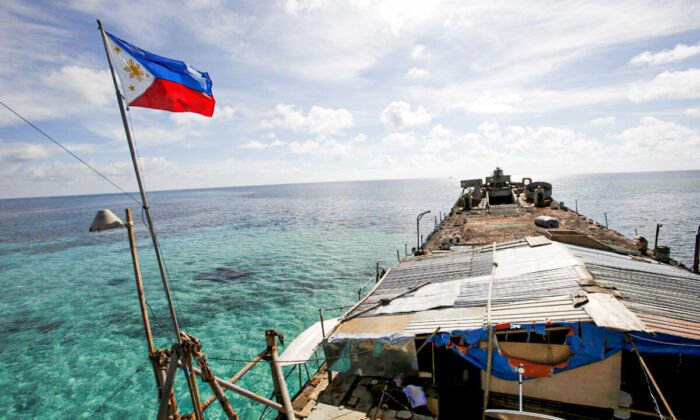Philippines Considers Pursuing Legal Redress against China for Damage to Coral Reefs
The country is exploring legal options against China, including the possible filing of complaints before an international court.
The Philippines is considering legal actions against China for its alleged destruction of coral reefs within Manila’s exclusive economic zone (EEZ) in the South China Sea, the Foreign Ministry said on Thursday.
The ministry said it would be guided by the Office of the Solicitor General (OSG) on the matter, pending assessments from relevant government agencies of the extent of environmental damage in Iroquois Reef.
Foreign Ministry spokesperson Ma. Teresita Daza said the United Nations Convention on the Law of the Sea (UNCLOS), to which China is a signatory, “obliges states to protect and preserve the marine environment” in the disputed sea.
The UNCLOS designates maritime areas within 200 nautical miles of coastal nations’ borders as their EEZs, and the Iroquois Reef is 128 nautical miles (237 kilometers) from the Philippines’ Palawan province.
“States entering the Philippines’ EEZ and maritime zones, therefore, are likewise obliged to protect and preserve our marine environment,” she added.
Solicitor General Menardo Guevarra said the OSG will assess various legal options, including the possible filing of complaints for damages before the Permanent Court of Arbitration (PCA) at The Hague.
The Philippines filed its first legal case with the PCA in 2013 and secured a victory in 2016 when the Hague Tribunal ruled that Beijing’s claims in the South China Sea lacked legal basis.
Severe Damage to Marine Life
The Philippine Coast Guard (PCG) said on Sept. 18 that Chinese maritime militia ships were responsible for the “severe damage” on coral reefs in Iroquois Reef and Escoda Shoal, which are within the Philippines’ EEZ.

The PCG said it observed an average presence of 33 Chinese maritime militia vessels in Iroquois Reef and 15 other vessels in Escoda Shoal between Aug. 9 and Sept. 11.
During that period, the coast guard conducted extensive underwater surveys of the seabed and found that the marine ecosystem there “appeared lifeless, with minimal to no signs of life.”
The PCG said there was “visible discoloration” of the seabed in Escoda Shoal that indicated “deliberate activities may have been undertaken to modify the natural topography of its underwater terrain.”
“The presence of crushed corals strongly suggests a potential act of dumping, possibly involving the same dead corals that were previously processed and cleaned before being returned to the seabed,” it said.
The PCG said the continued swarming of Chinese militia ships “for an indiscriminate illegal and destructive fishing activities” may have directly caused the degradation and destruction of the marine environment in the areas.
Beijing claims much of the South China Sea as its own territory. In 2016, the Hague Tribunal sided with the Philippines in its territorial disputes over the South China Sea, but the Chinese Communist Party (CCP) refused to recognize the ruling.
Source link






